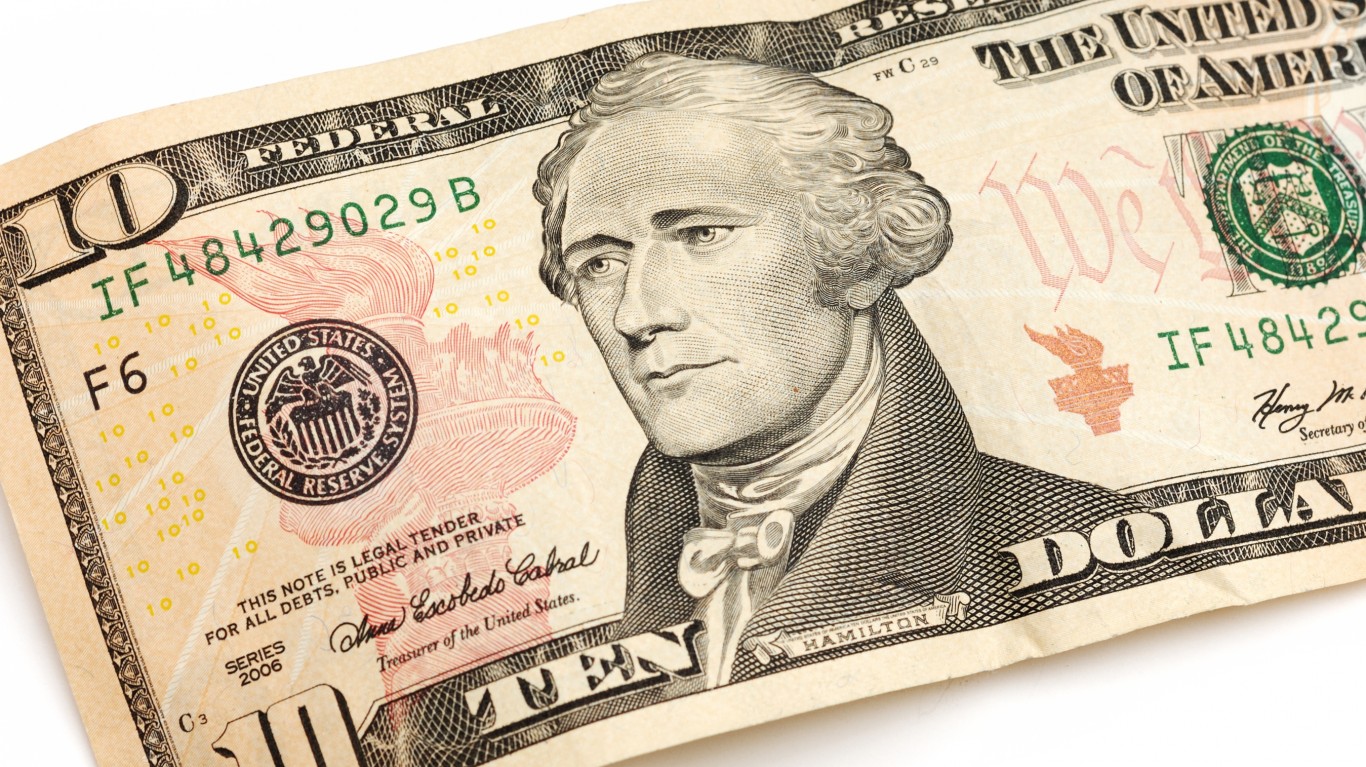 For three years, the real estate market has been going in one direction — primarily down. Some areas, however, have begun to recover. Recent S&P/Case-Shiller data show that among the top 20 housing markets in the U.S., 18 had very modest improvements in sales prices during May. Others, like Washington and Boston, have began to at least stabilize from a year ago.
For three years, the real estate market has been going in one direction — primarily down. Some areas, however, have begun to recover. Recent S&P/Case-Shiller data show that among the top 20 housing markets in the U.S., 18 had very modest improvements in sales prices during May. Others, like Washington and Boston, have began to at least stabilize from a year ago.
Few markets, however, can match Washington and Boston. Robert Shiller has been stating that home prices could fall another 10% in the next year. Inventories in some major metropolitan areas would take years of sales to get back to 2005 levels. Then, the normal inventory of homes for sale was replaced on average every six months and it was unusual for a house to be on the market for a year.
Foreclosure rates remain high and only the robo-signing scandal has slowed the process. Once this is resolved, economists fear the market will be flooded with even more vacant, unsold homes.24/7 Wall St. has taken a new look at the housing market to find the very weakest cities by identifying those with the highest homeowner vacancy rates and rental vacancy rates.
These are markets where demand has clearly collapsed. These are cities where the requirement for living space has dropped well below the national average. Further, vacancy rates of many cities were stable during the recession, but accelerated sharply higher in the last year. Similarly, housing prices in several of these markets have decreased at a faster rate in the last three quarters than during the recession.
These cities, like Detroit, St. Louis, Dayton, and Atlanta, also tend to be larger and older among the top 75 metropolitan areas. Their economies were damaged long before the recession.
Methodology: 24/7 Wall St. pulled Census data on the 75 largest U.S. metropolitan areas and ranked the cities with the highest overall vacancy rates for both homeowner vacancy and rental vacancy for the second quarter of 2011. We picked the cities with the worst rates in each of the two categories to create meta-data ranks. We then removed the cities that had either improved homeowner vacancy rate in either the last twelve months or the last quarter. We believed that any sign of improvement in homeowner vacancies, the more telling of the vacancy rates, should disqualify a city. To improve our analysis, we also looked at unemployment rates for these cities provided by the Bureau of Labor Statistics. We also used historical median home prices, as provided by the National Association of Realtors. The analysis shows that some cities have home vacancy rates over 5% and rental vacancy rates over 10%. Obviously, these levels of unused inventory have the effect of driving down both home and rental prices month after month. It also means that there is comparatively little demand for the purchase of new or existing homes. These ten markets are essentially dead as far as real estate prices and sales activity are concerned.
These are America’s ten sickest housing markets.
10. Oklahoma City, OK
> Homeowner vacancy rates: 5.2% (6th)
> Rental vacancy rates: 9.6% (34th)
> Total housing units: 539,077
> Unemployment: 4.9%
Oklahoma City had the sixth highest homeowner vacancy rate in the country as of the second quarter of this year. The city’s unemployment rate is just 5.3%, but this low rate has not helped improve high home and rental vacancy. From last year, home sales in Oklahoma state dropped by 7.7%, according to the state’s newspaper NewsOK. In the city, sales were flat from last year. Between the second quarter of 2010 and the second quarter of 2011, the median home price in the city dropped by 4.5%.
9. St. Louis, MO
> Homeowner vacancy rates: 3.3% (19th)
> Rental vacancy rates: 11.4% (18th)
> Total housing units: 1,236,222
> Unemployment: 8.6%
In 2008 and 2009, the St. Louis area has shed more than 82,000 jobs. This loss had a negative impact on the city’s real estate market. Vacancy rates have continued to rise, increasing from under 2% one year ago to 3.3% in the recent quarter. The rise in vacancy rates has occurred while the median sales price for single family homes has fallen more than 19% since 2008. While rental vacancy rate, which is currently at 11.4%, has decreased slightly since the last quarter, it is still 1.6 percentage points higher than it was last year. St. Louis office vacancy rate is at 12.6%, according to real estate information company CoStar Group.
8. Kansas City, MO (Tied for 8th)
> Homeowner vacancy rates: 3.7% (13th)
> Rental vacancy rates: 11% (22nd)
> Total housing units: 883,099
> Unemployment: 8.4%
Kansas City’s rental vacancy rate of 11% is the 22nd highest of any major city in the country, while its homeowner vacancy rate of 3.7% is the 13th highest. The city has a relatively high rate of unemployment, at 8.4%. While it’s below the national average of 9.2%, it is well above the state average of 6.6%. The median home price in the city is down by $19,000, or more than 13%, since 2008. Most of that decline came in the last year. Between the second quarter of 2010 and the first quarter of this year, prices dropped by more than $25,000.
7. Detroit, MI (Tied for 8th)
> Homeowner vacancy rates: 2.4% (32nd)
> Rental vacancy rates: 17.2% (3rd)
> Total housing units: 1,886,537
> Unemployment: 11.6%
The recession hasn’t been kind to Detroit. Part of the Detroit-Warren-Livonia metropolitan area, it has been among the hardest hit cities in the country. Since 2005, the metropolitan area has lost approximately 323,400 jobs. Unemployment in the Motor City almost reached 30% in 2009. According to one estimate, the city had 90,000 abandoned or vacant lots or residential homes in 2010. One of the reasons the city is not at the top of this list is that the city had so many vacant properties that a huge portion of them were demolished. Regardless, at 17.2%, the rate of rental vacancy is still the third highest rate in the nation.
6. Dayton, OH
> Homeowner vacancy rates: 4.7% (7th)
> Rental vacancy rates: 10.7% (23rd)
> Total housing units: 385,160
> Unemployment: 9.3%
Dayton’s home vacancy rate of 4.7% is the seventh-highest in the country among major cities. At one time, Dayton was a much larger city and an economic powerhouse. The Ohio city, which was a major manufacturing center, was at one point awarded more patents each year than any other place in the U.S. The city has a particularly bad unemployment rate of 9.3%. Median housing price, which stood at $109,000 in 2008, has fallen by 29%, or $27,000, between 2008 and the first quarter of this year.
5. Baton Rouge, LA
> Homeowner vacancy rates: 3.9% (11th)
> Rental vacancy rates: 13% (12th)
> Total housing units: 329,729
> Unemployment: 8.4%
Baton Rouge did not emerge from the recession unscathed, but it did perform better than many other cities in the U.S., in part because it is the state’s capital city and in part because of the money brought in through Hurricane Katrina recovery work. However, according to one local news station, the area has built more housing structures than it could fill following Katrina. The city has not been able to break free of this situation, as both homeowner vacancy rates and rental vacancy rates have increased not only since last year, but since the last quarter as well.
4. Atlanta, GA
> Homeowner vacancy rates: 5.4% (4th)
> Rental vacancy rates: 11.8% (17th)
> Total housing units: 2,165,495
> Unemployment: 9.7%
Atlanta’s homeowner vacancy rate of 5.4% is the fourth highest among major U.S. cities. The city, which had a significant influx of new residents, particularly from the northeast, has been hit hard. Atlanta’s unemployment rate of 9.7% is well above the national average of 9.2%. According to the Atlanta Journal-Constitution, the city had lost nearly 25,000 jobs between June of 2010 and June of this year. Between 2008 and the first quarter of this year, homes have lost more than a third of their value, dropping in price by nearly $50,000.
3. Memphis, TN
> Homeowner vacancy rates: 4% (9th)
> Rental vacancy rates: 13.5% (11th)
> Total housing units: 550,896
> Unemployment: 10.1%
Memphis’s slow economic recovery has kept vacancy rates high. The metropolitan area’s homeowner vacancy rate has increased from 2.5% in 2010 to 4% in the second quarter of 2011. In the city’s defense, its rental vacancy rate has decreased from a staggering 21.2% in 2010 to 13.5%. This is still among the highest in the country, but it is an improvement. The unemployment rate remains at 10.1%, which is significantly higher than the national average of 9.2%.
2. Indianapolis, IN
> Homeowner vacancy rates: 5.2% (5th)
> Rental vacancy rates: 13.5% (10th)
> Total housing units: 757,441
> Unemployment: 7.8%
The median home price has dropped by $20,000, or 13.5%, between the second quarter of 2010 and the first quarter of this year. Indianapolis’s home vacancy rate of 5.2% is the fifth-highest in the country. Its rental vacancy of 13.5% of units is the tenth highest in the country. In 2009, while vacancy had not even reached its worst point, the mayor’s office of Indianapolis recognized the serious problem the city faced. The city’s plan to help solve the abandoned home issue states: “Indianapolis, like many communities, faces a significant challenge in dealing with vacant and abandoned properties. This challenge is exacerbated both by weaknesses in the local and regional housing markets – including an oversupply of housing relative to demand – and by the high and growing rate of foreclosures.”
1. Tucson, AZ
> Homeowner vacancy rates: 6.8% (1st)
> Rental vacancy rates: 15.9% (6th)
> Total housing units: 440,909
> Unemployment: 7.8%
Tucson’s homeowner vacancy rate was 3.2% one year ago. It is now over double that. The city had a booming residential housing market before the crash. Since then, demand is so low that median home prices have dropped 18% in the past year and 33% since 2008. In addition, the city has among the highest rate of foreclosures in the country.
Charles B. Stockdale, Douglas A. McIntyre and Michael B. Sauter
Sponsored: Attention Savvy Investors: Speak to 3 Financial Experts – FREE
Ever wanted an extra set of eyes on an investment you’re considering? Now you can speak with up to 3 financial experts in your area for FREE. By simply
clicking here you can begin to match with financial professionals who can help guide you through the financial decisions you’re making. And the best part? The first conversation with them is free.
Click here to match with up to 3 financial pros who would be excited to help you make financial decisions.
Thank you for reading! Have some feedback for us?
Contact the 24/7 Wall St. editorial team.



